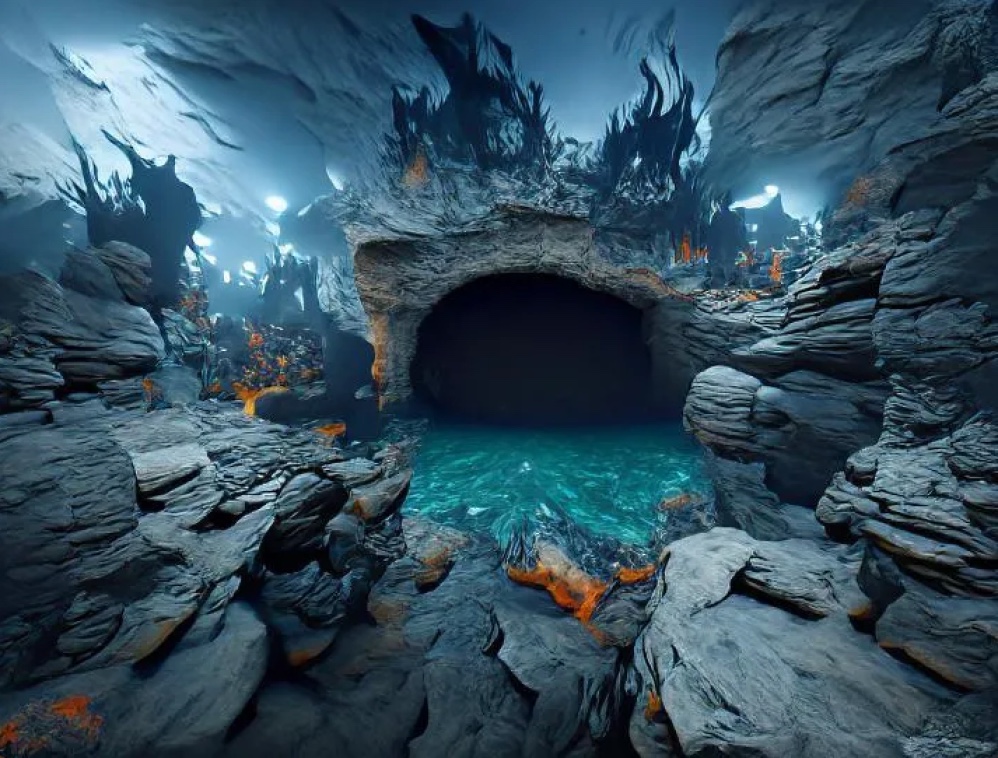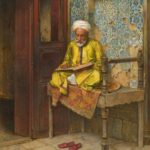
Heritage may be considered a sea that those who do not know how to swim will drown in or surrender to everything that floats on its surface. It is a labyrinth of winding caves for those who have not recognized how its systems produce meaning, or who lack a critical mind to save them from getting lost in its tunnels.[1]
A CRITICAL UNDERSTANDING of heritage should be a necessity for those who specialize in religious sciences. We have specialists writing in all branches of the religious sciences who lack training in the heritage or any experience in how their paths intertwine. They have not been academically trained in any rigorous university, and often write without a diligent reading of the accumulated heritage. Anyone seeking to renew the understanding of the faith must arm themselves with a deep training in this heritage and have a scientific awareness of man and society. He needs to do this so that he can discover something of the buried, unconscious infrastructures of the individual and his society.
No heritage exists immune from the influence of history. Those who do not believe in the historicity of the heritage are incapable of understanding how the sacred texts can resume their function in producing religious conceptions that keep pace with the changes taking place in our lives, and the underlying rhythm to these swift transformations. The proper study of heritage is vital if we want to free ourselves from its power and domination. Without a scientific and critical approach to the heritage the individual appears like one whose father has died but remains clueless how to embalm the body or bury it, and so carries it on his shoulders for the rest of his life, until his energy is all drained out of him and is unable to build his present or accomplish anything for his future.
The proper study of heritage is vital if we want to free ourselves from its power and domination
An a-historical interpretation of heritage is one of the fundamental gaps that now exist in the teaching and study of religion. Yet the history of religious scholarship, the circumstances of their birth and the way they became formed are an essential component in how they came about and took shape. Without this knowledge the student remains ignorant. For the history of the religious sciences is not a neutral one; right from their very birth we can discern hidden ills, and the basic role played by political authority in the way they formed themselves and how the caliphate system steered them towards removing anything that could delegitimize it religiously, and towards enhancing its longevity.
At its birth, religious knowledge was thus subject to the requirements of the institution of the caliphate, and the authority of the caliphs exercised an overt and covert tutelage that controlled the inception, development and direction of the religious sciences. The interests of the caliph always took precedence over the interests of the nation, and the preservation of the caliphate became the axis around which all efforts were to be mobilized – regardless of the interests, freedoms, rights and private lives of the subject peoples.
Any attempt at ijtihād and critical thinking outside of the framework of the caliphate’s requirements was doomed to be nullified and eradicated. Such, for instance, was the fate of Ghaylān al-Dimashqī,[2] whose hands and feet were cut off before he was crucified by the Umayyad caliph Hishām ibn ‘Abd al-Malik. This also was the fate of Ja’d ibn Dirham[3], who was slaughtered on the day of Eid al-Adha by Khālid ibn ‘Abd Allāh a-Qasrī the wālī of Hishām ibn ‘Abd al-Malik at Kufa. The same fate overtook Jahm ibn Ṣafwān,[4] who was the victim of the verdict issued in 128 AH by Naṣr ibn Sayyār al-Kinānī, governor of Khorasan who commanded ‘Abd Rabbo ibn Saysan to kill him.
These and others were victims, at these bitter moments in history, of their critical reasoning, their free thinking and their refusal to obey the beliefs and opinions of the hadith scholars, the jurists and theologians who were the subjects of the Caliph’s tutelage and dependant on his support and directions. The Mu‘tazilites similarly fell victim to their own rational thinking, when speculated outside the bounds of what the scholarly institutions of kalām scholastics and jurists of the caliphal institution permitted. The intellect of the Mu‘tazilites implicated them in that which was forbidden to think about, and the fact that theirs were the most fertile and deepest minds in kalām theology and other fields did not save them.
An a-historical interpretation of heritage is one of the fundamental gaps that now exist in the teaching and study of religion
An acute scholar is one who learns and who instructs readers that what historians have not written down is just as important as what they have recorded – and perhaps even more important. Much of what the historians recorded was produced by the imagination of groups contradicting each other in their beliefs and interests, and conflicting over what form political and spiritual power should take. The organic link between the monopoly of power and the how religious knowledge was born and directed is what a researcher in the history of religious sciences should seek to discover. The monopoly of power is a monopoly of religious knowledge, and the monopoly of religious knowledge leads to a monopoly of power. This is what lies behind the emergence and development of the religious sciences in our heritage, and it is something which historians have failed to highlight.
Revival begins with heritage and ends with heritage, and so do most attempts at reform. Most of the writings of revival and reform are piled up words upon words, at times words devoid of any content, until the avid reader tires of them. Renewing the understanding of religion begins at that point where speaking revival and reform comes to an end and those who preach it cease repeating words. It begins with a deep critique of the heritage, the uncovering of its solid infrastructure, and the identification of systems for producing religious meaning in it. It begins with the highlighting of Islam’s approach to knowledge, in the light of which the religious sciences took shape. Epistemology, methods of thinking and tools of vision – these are the fundamental components of the established structure of the heritage, and these are what govern the formation of a Muslim’s worldview.
The history of the religious sciences is not a neutral one; right from their very birth we can discern hidden ills
To build anew the religious sciences means starting from a critical assimilation of the heritage of modernity, its sciences and knowledge-base. ‘Ilm al-kalām scholasticism[5] and its premises represent, in my opinion, the epistemological theory underpinning a Muslim’s way of thinking, and the tributary that feeds into his deep-rooted unconscious mental structures. It was in the light of ancient ‘ilm al-kalām that the religious sciences were formulated, contrary to the view of some thinkers that fiqh constitutes the theory of knowledge.
Most reform efforts did not touch the complex fabric of power that shaped the constituent components of the heritage, and fused together a cohesive fabric feeding these components, to a point that it solidified and closed in on itself. Some of these components – in the individual and collective consciousness and unconscious – attained to the rank of certainties that needed no proof; there was henceforth no need to revisit them, question them or criticize them.
Heritage gradually turned into an authority that obliged the mind to think within its accepted framework and prohibited it from venturing beyond its domain. Right at the outset elementary and higher studies have been held captive to a process of reading and handling the heritage with its the tools, modes of vision and educational curricula belonging to this framework. At no point did attempts ever go beyond acquiescing to this heritage, simplifying its dictums or expounding and summarizing them in a language that merely imitates contemporary Arab rhetorical verbiage and dares not question its postulates and convictions.
Revival begins with heritage and ends with heritage, and so do most attempts at reform
The circumstances of the establishment and formation of the heritage were never subjected to review and debate, and instead it was the function of schools and the institutes of religious education simply to preserve them, expound them, sanctify them and protect them from showing any cracks in the fabric and collapsing. Over time, these traditional disciplines, born as they were in the fold of religion, acquired something of a sacred aura, so that identifying any cracks in any of them was tantamount to searching for cracks in the sacred edifice. A sacralised edifice protects itself from the troubling skepticism of the intellect, and stubbornly resists any criticism that approaches its borders. Most students of the tradition joined the ranks of those guarding these disciplines and prevented any attempt at revisiting and debating how they had been formed and developed. By flashing their sanctity they prevented the intellect from getting too close and scared off anyone daring to delve back into the times they were founded.
“The people of my generation are the best, then those who follow them, and then whose who follow the latter. After that there will come some people whose witness will go ahead of their oaths, and their oaths will go ahead of their witness.”

Suggested Reading
‘The Best Centuries’ – How should we understand history? – 2
This hadith, narrated in the Ṣaḥīḥ of al-Bukhārī and others, was held by many of the hadith scholars and historians of yesteryear as an unquestionable fact. This was due to its appearance in influential works, in collections of hadith, in storytelling and in works of history, and due to its being continuously adduced in religious education institutes and Friday pulpit sermons – a centuries-long indoctrination. Few were those who pondered on the mismatch between the events, attitudes and behaviour of the Companions and the Followers,[6] and the bitter reality of the times they lived through and which found expression in their standpoints and disputes: three of the Rightly-Guided Caliphs were murdered, while the Companions fought a series of internecine bloody wars barely half a century after death of the Prophet Muḥammad.
How, then, can such times be described as ‘the Best of Centuries’? Anyone with any knowledge of history knows that they were centuries baptized with blood from the very start.
[1] This essay is taken from the author’s review of Dr. ‘Alī al-Dayrī: خير القرون :كيفَ نفهمُ الخيرَ في التاريخ؟ (‘The Best of Centuries: How should we understand history?’).
[2] Ghaylān al-Dimashqī (fl. c.100/719) was a prominent leader of the Qadarī movement, whose adherents believed in human free will.
[3] Ja’d ibn Dirham was described as a zindīq (heretic) for being the first person to state that God does not speak and hence the Qur’ān is created.
[4] Jahm ibn Ṣafwān is the eponymous figure of the Jahmiyya doctrine which denied all the names and attributes ascribed to God and argued that the definition of faith was knowledge of God, with kufr being a state of ignorance of Him. They took a pantheistic view of God and some believed that the Qur’ān was a set of meanings that Allah had created and sent down to the Prophet, and which the Prophet put ‘expression’ to, that is, that the Qur’ān was ‘created’ and not eternal. (Ed.)
[5] See Glossary: ‘Kalām’.
[6] See Glossary: ‘Sahāba’ and ‘Tābi‘ī’
